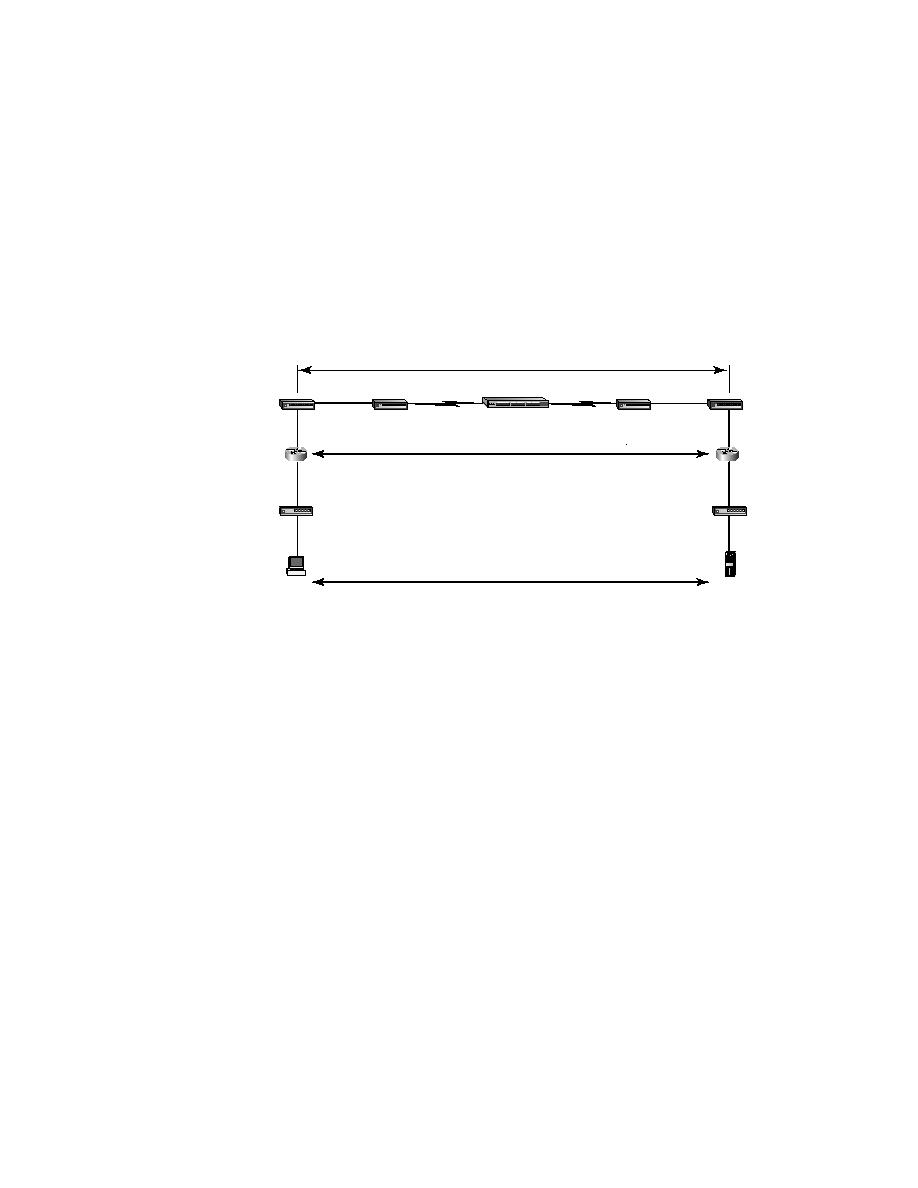
516
Chapter 10
Wide Area Networking Protocols
Frame Relay Terminology
To understand the terminology used in Frame Relay networks, first you need to
know how the technology works. Figure 10.4 is labeled with the various terms
used to describe different parts of a Frame Relay network.
F I G U R E 1 0 . 4
Frame Relay technology and terms
The basic idea behind Frame Relay networks is to allow users to commu-
nicate between two DTE devices through DCE devices. The users should not
see the difference between connecting to and gathering resources from a local
server and a server at a remote site connected with Frame Relay. Chances are
this connection will be slower than a 10Mbps Ethernet LAN, but the physical
difference in the connection should be transparent to the user.
Figure 10.4 illustrates everything that must happen in order for two DTE
devices to communicate. Here is how the process works:
1.
The user's network device sends a frame out on the local network. The
hardware address of the router (default gateway) will be in the header
of the frame.
2.
The router picks up the frame, extracts the packet, and discards the
frame. It then looks at the destination IP address within the packet and
checks to see whether it knows how to get to the destination network
by looking in the routing table.
3.
The router then forwards the data out the interface that it thinks can
find the remote network. (If it can't find the network in its routing
table, it will discard the packet.) Because this will be a serial interface
CSU/DSU
CSU/DSU
Demarc
Demarc
Hub or
switch
Hub or
switch
Router
DLCI 16
Router
DLCI 17
CO
User
Server
Frame actually transverses this.
Users only see this.
PVC
Routers see this
Copyright ©2002 SYBEX, Inc., Alameda, CA
www.sybex.com
